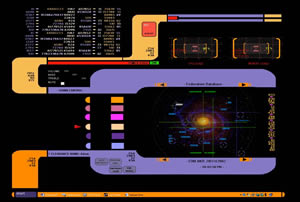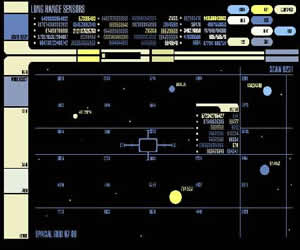Unlike most other departments, Operations does not have a main base, so to speak, from which it works. Operations, having much to do with the entire ship, essentially works all over the ship. The Chief of Operations, however, does have an office, but this office is merely a place for administrative work. If Operations were to have a place from which they gave the main body of their orders, it would be the Operations station, which is located on the bridge. Here, the Operations Watch Officer monitors ship power levels and sensor performance, ensuring all are ready to support the ship’s mission.

Probably the single most important operational element of a starship is it’s main computer system, being responsible in some way for most every aspect of the ship’s operation.
The heart of the system is a set of three main processing cores, which incorporate a series of miniature subspace field generators to allow the processing of optical data at rates faster than the speed of light.

The computer cores are redundant, so any one can handle the computing load of the entire ship should the need arise.
An intricate optical data network (ODN) connects the cores with virtually every component on board the ship, and a subspace link is maintained with hand-held or remote devices needing computer access.
Sensors:
The eyes and ears of USS Hiroshima are operated and maintained by Operations Department.

